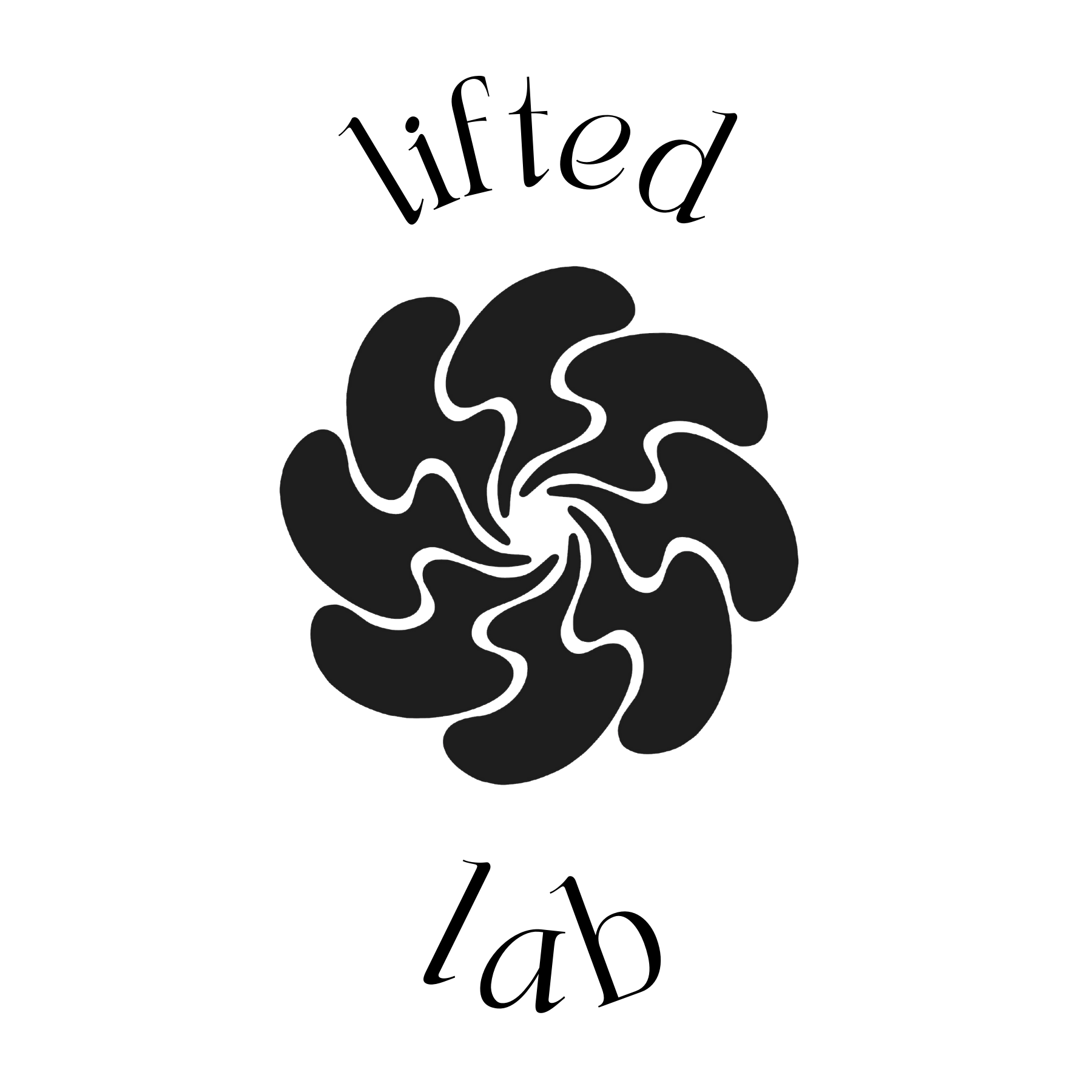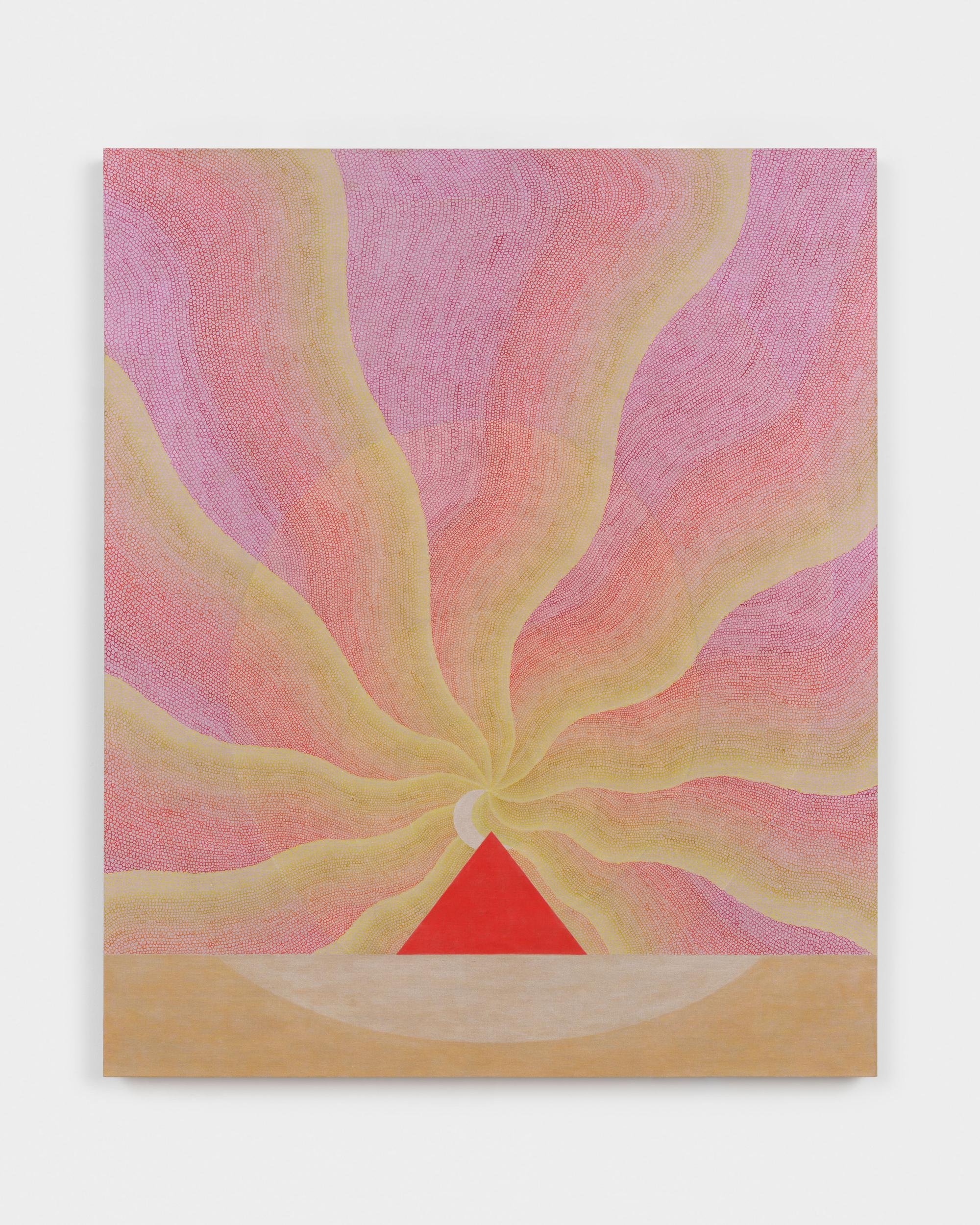Jen Hitchings “Deep Life in Heat”
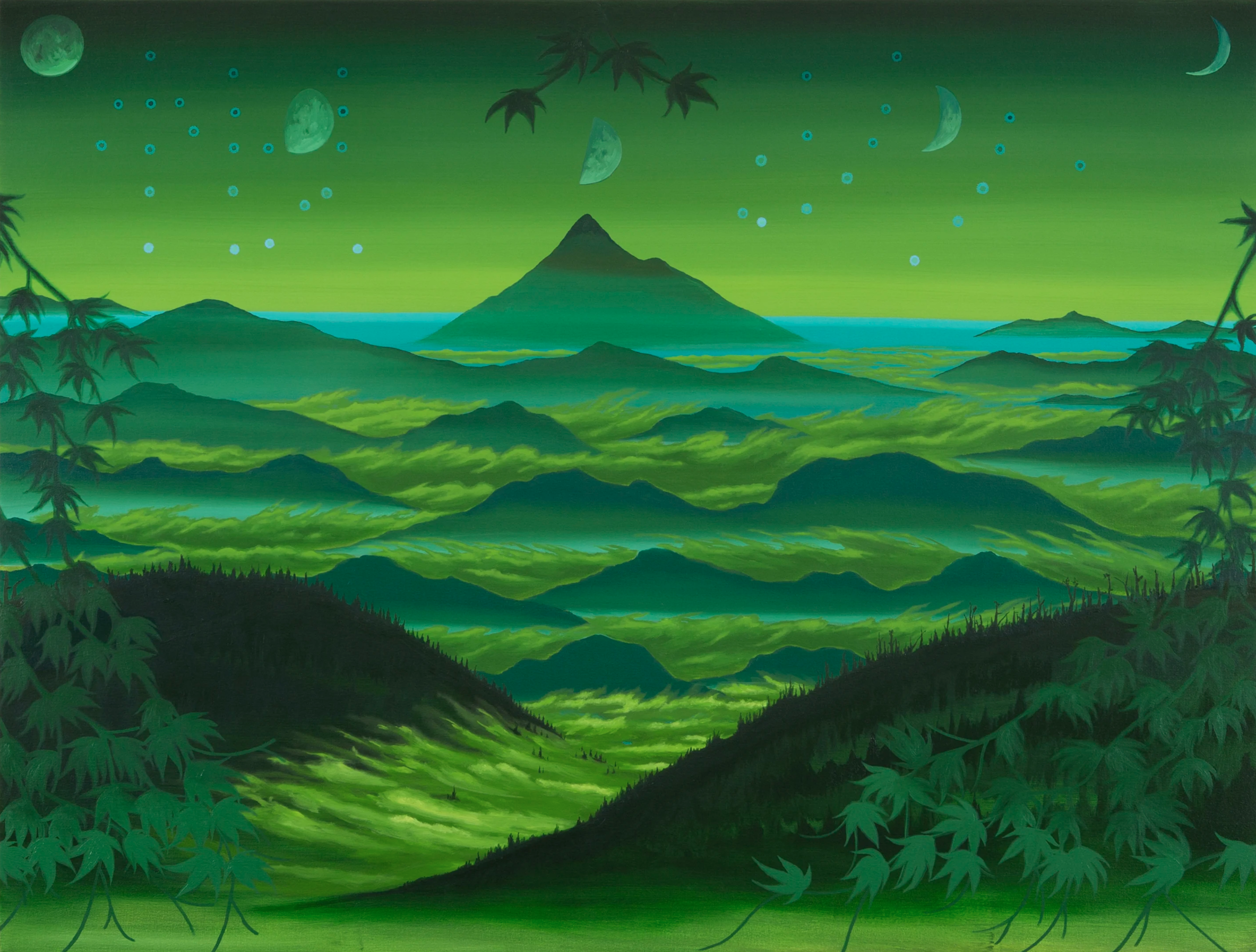

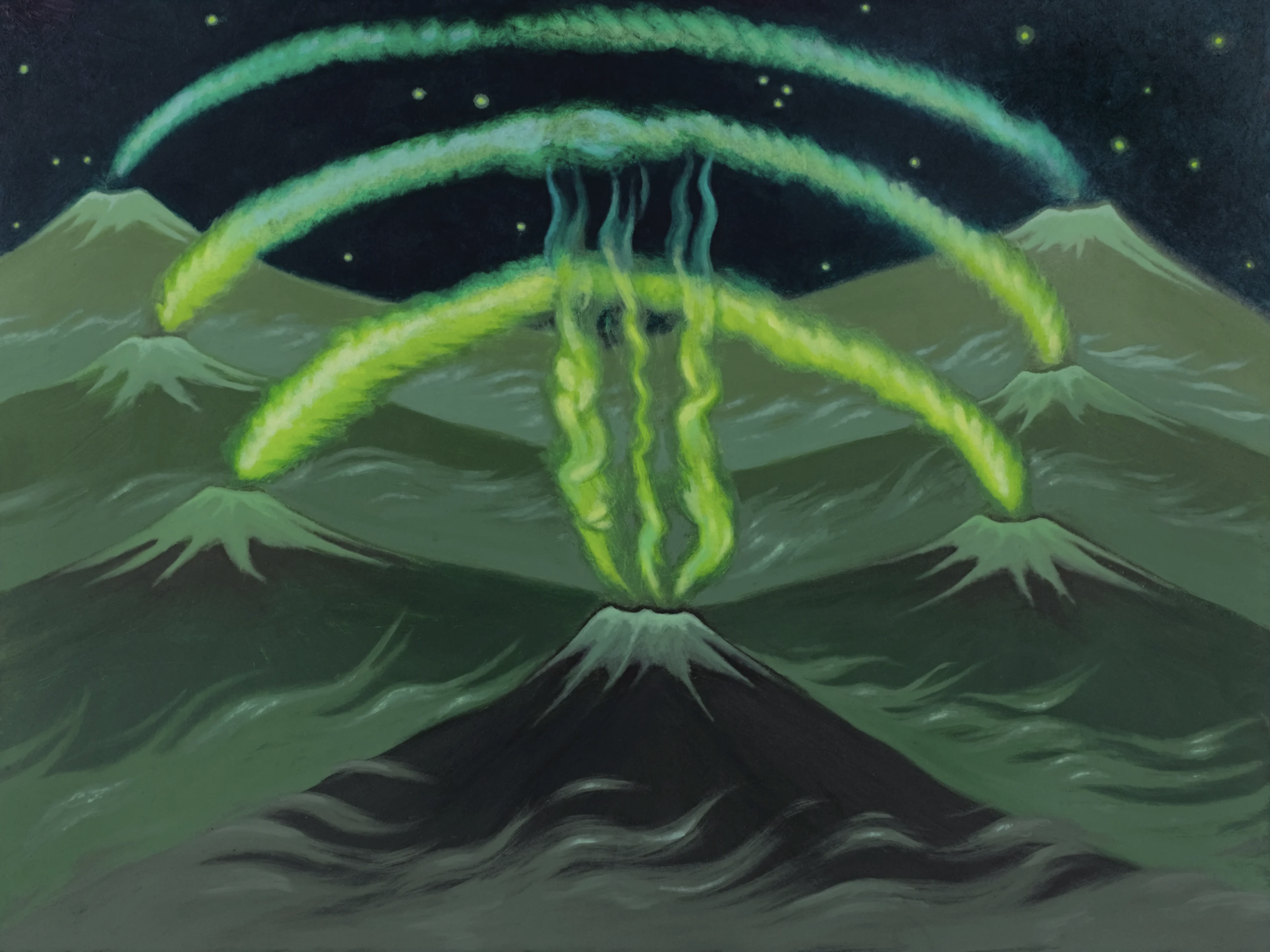
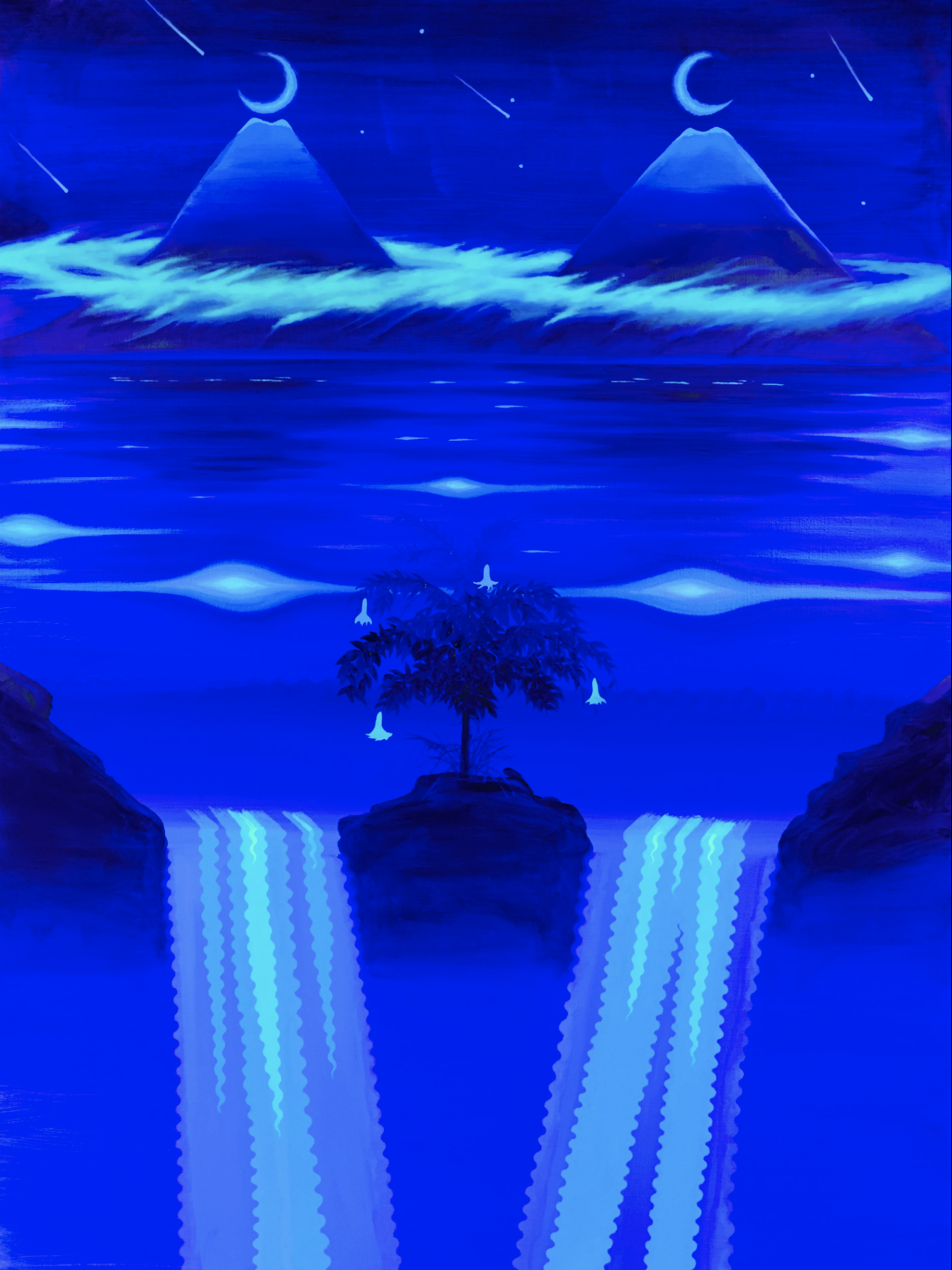
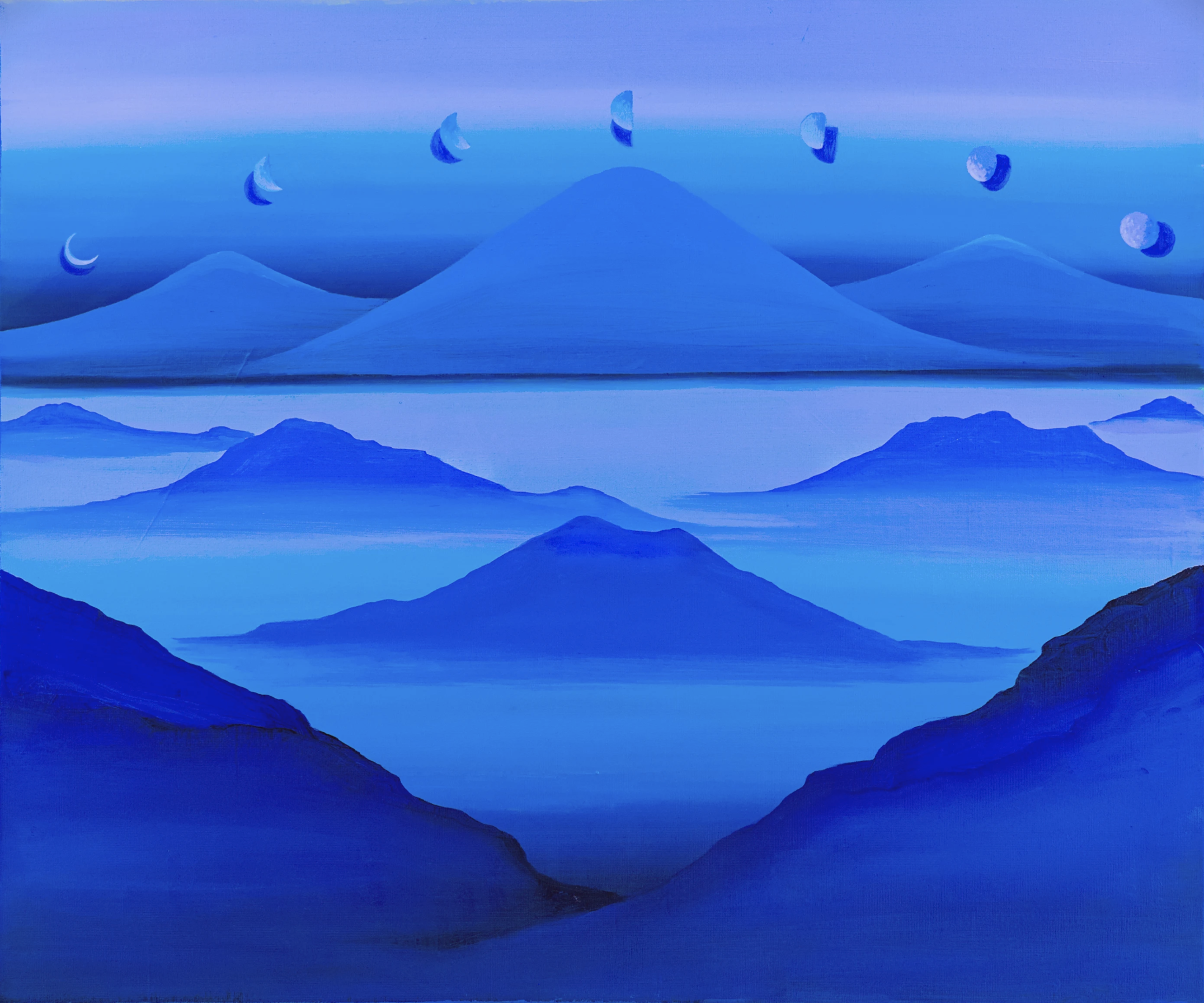
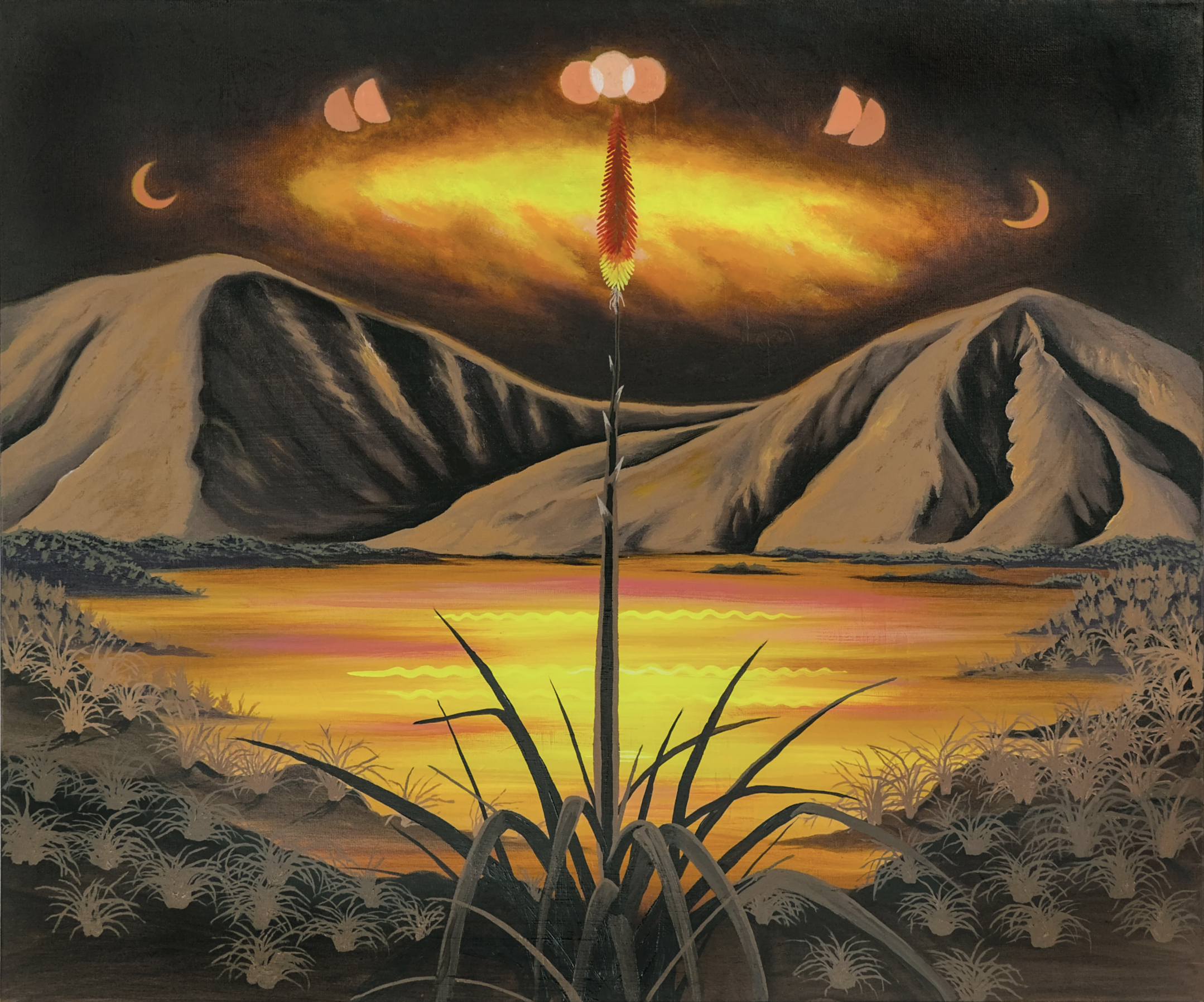
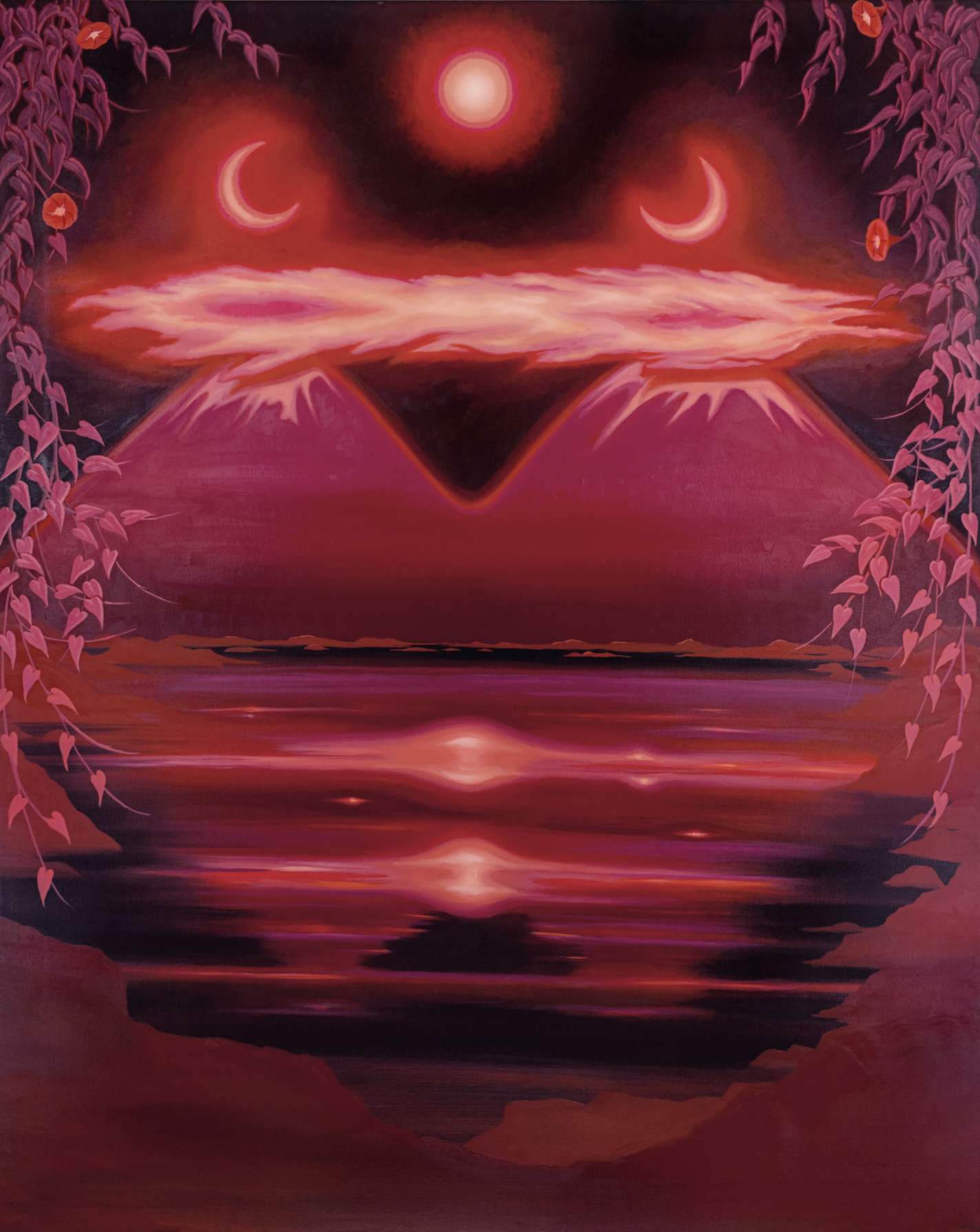

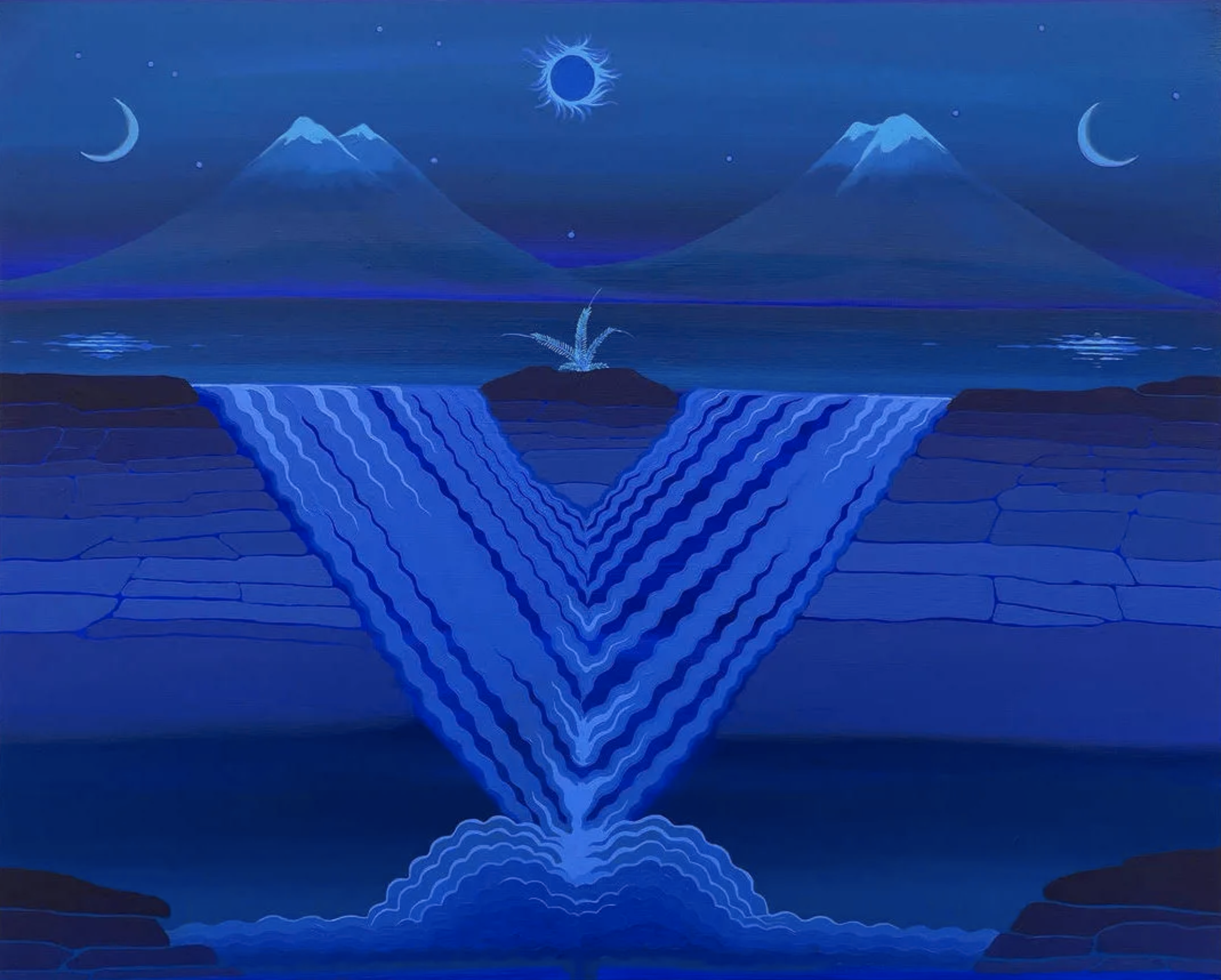
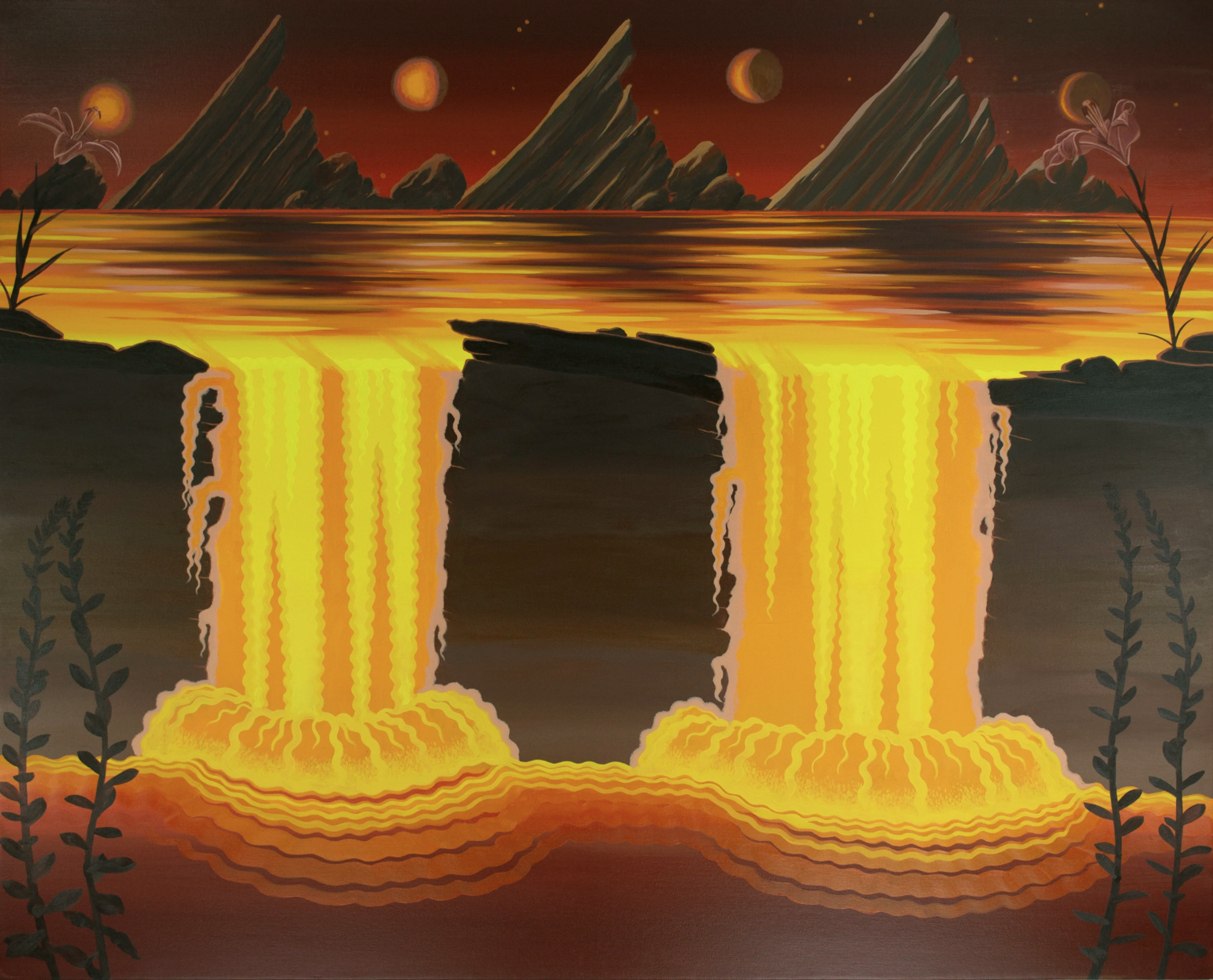
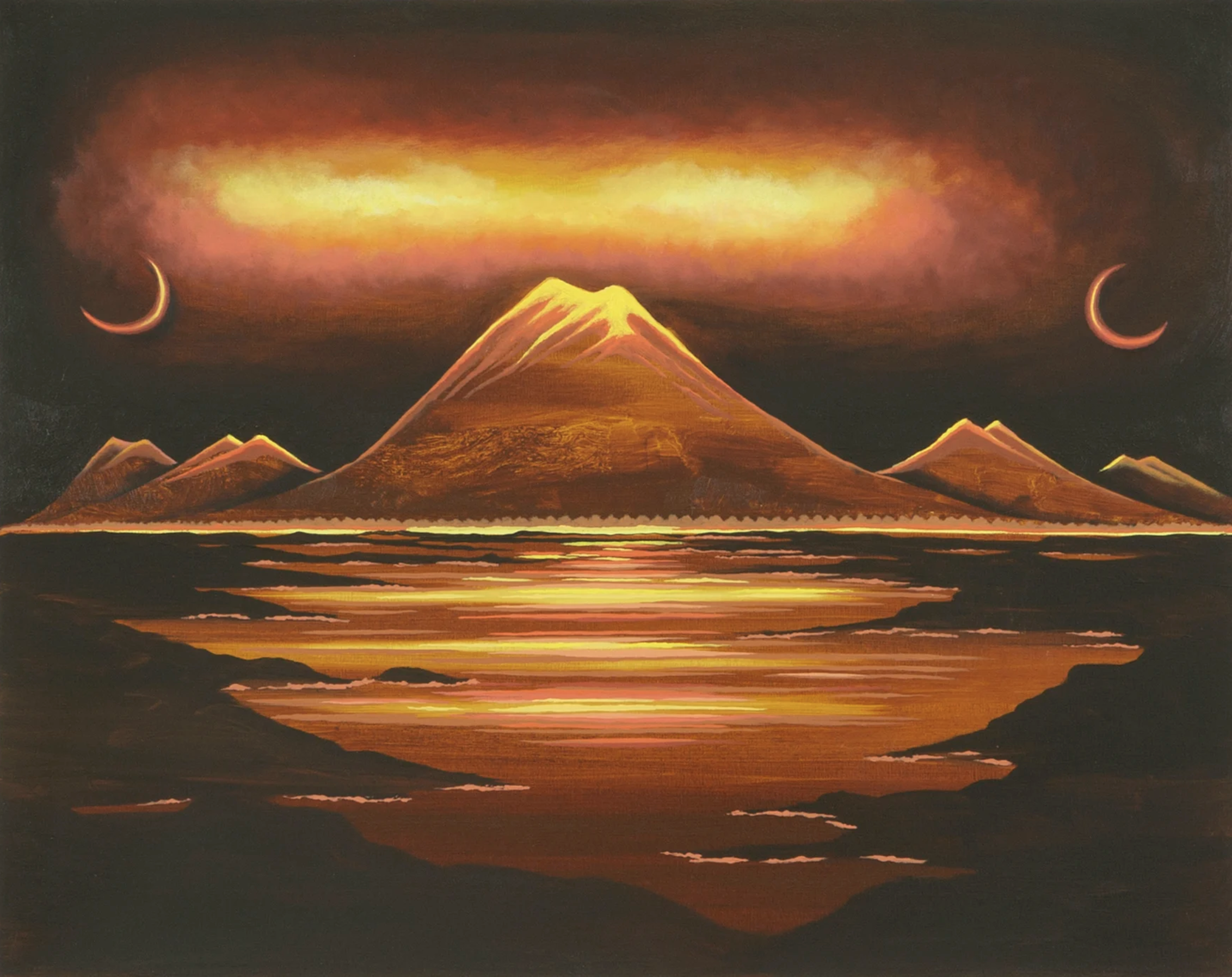
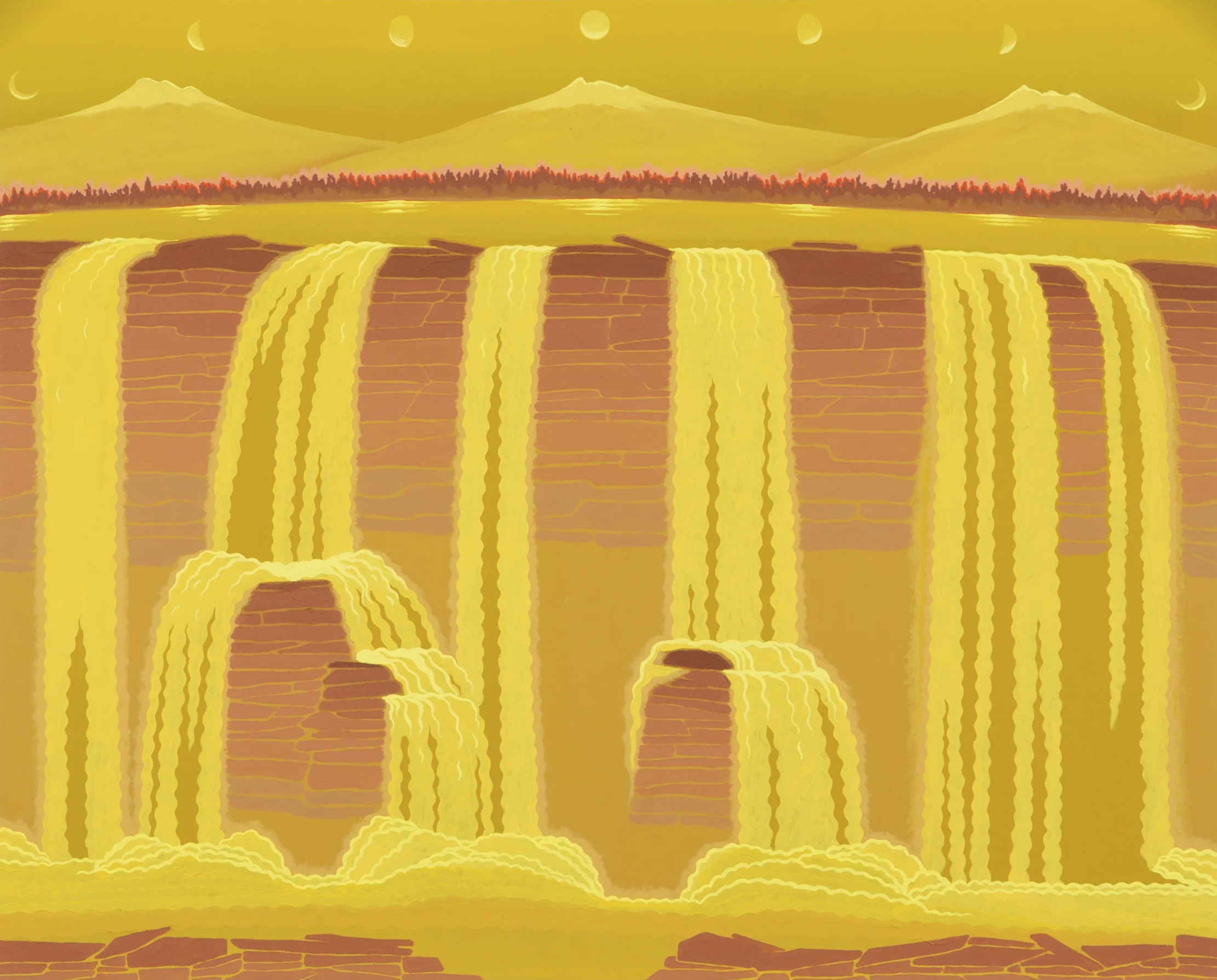
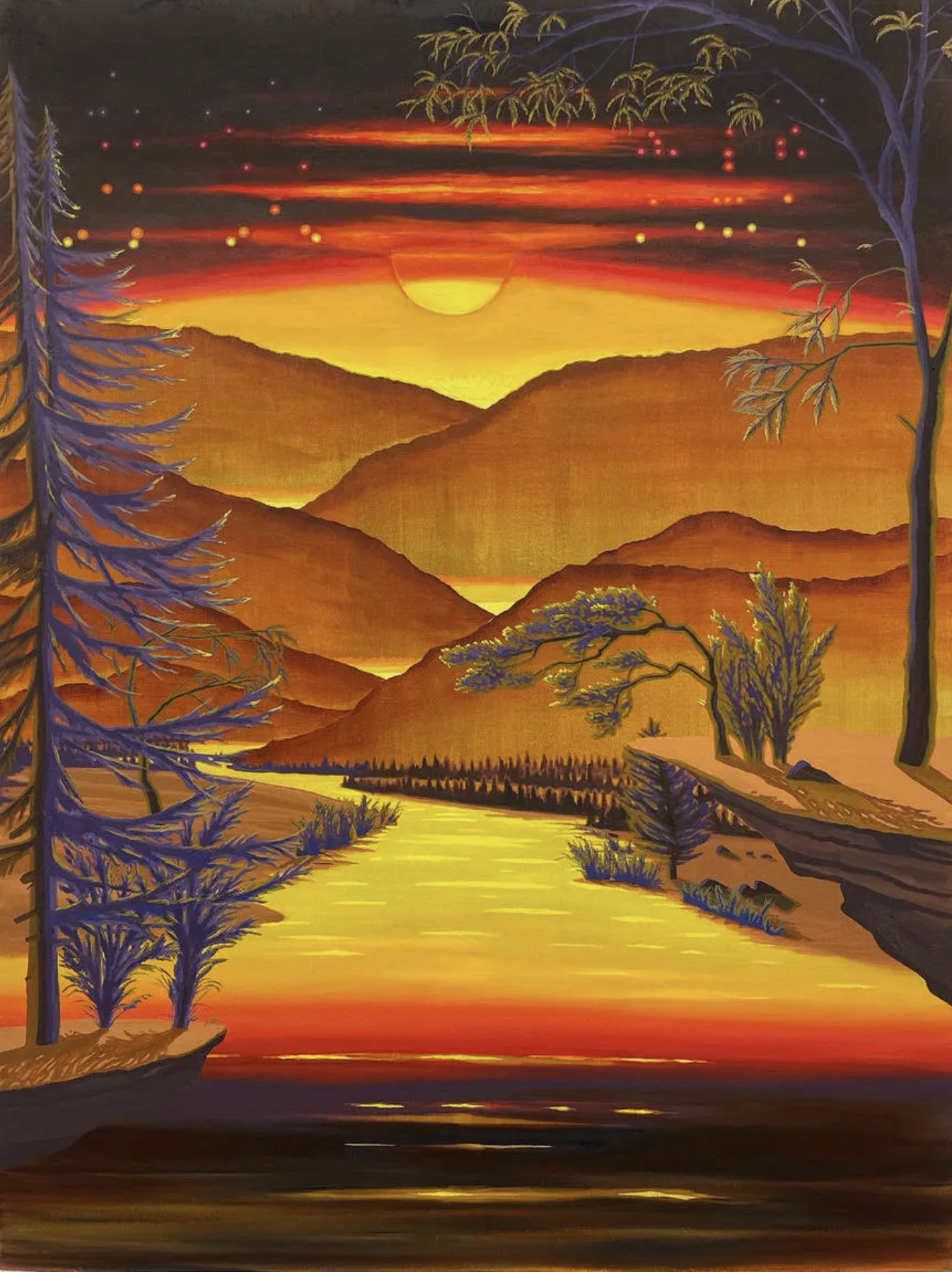
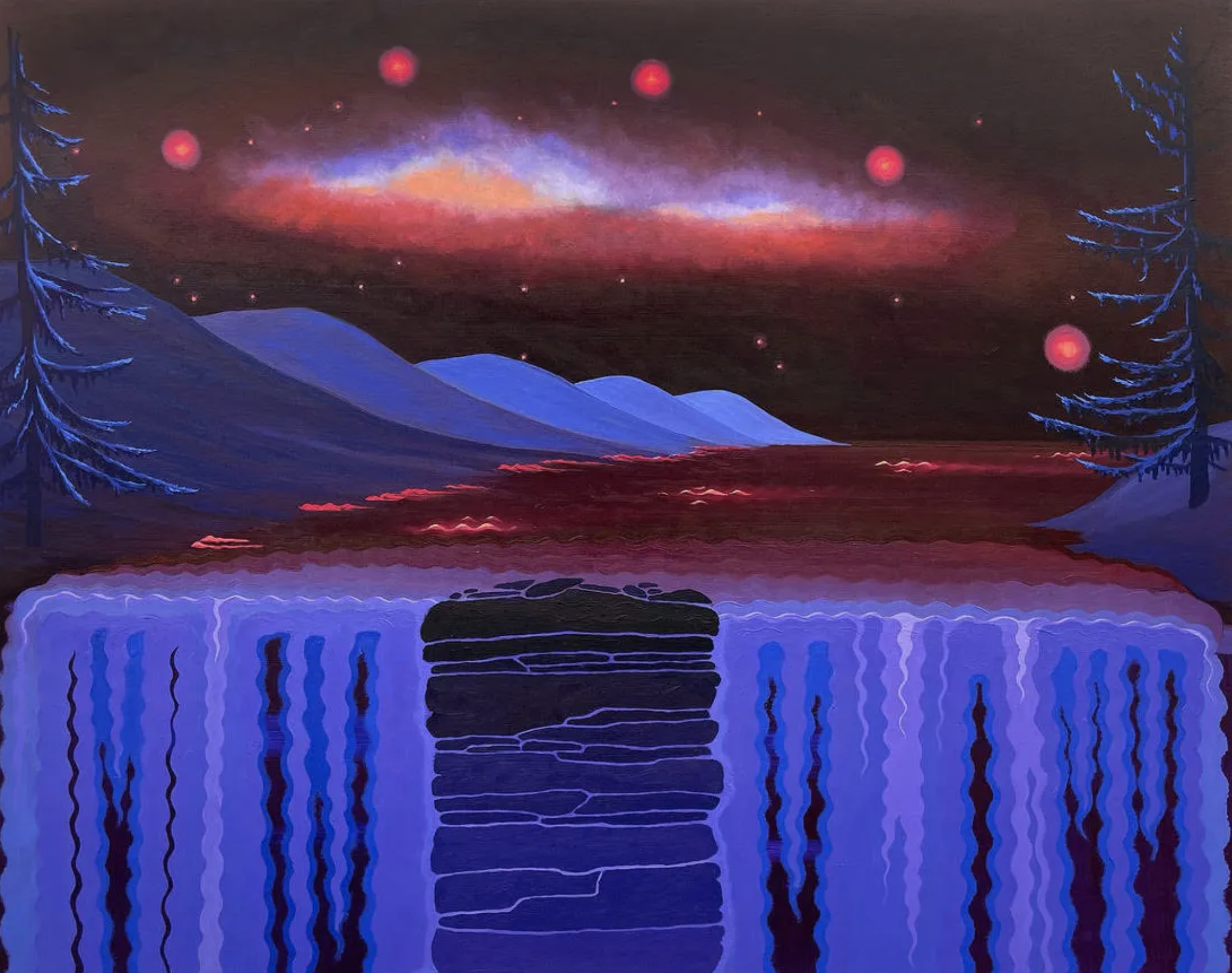

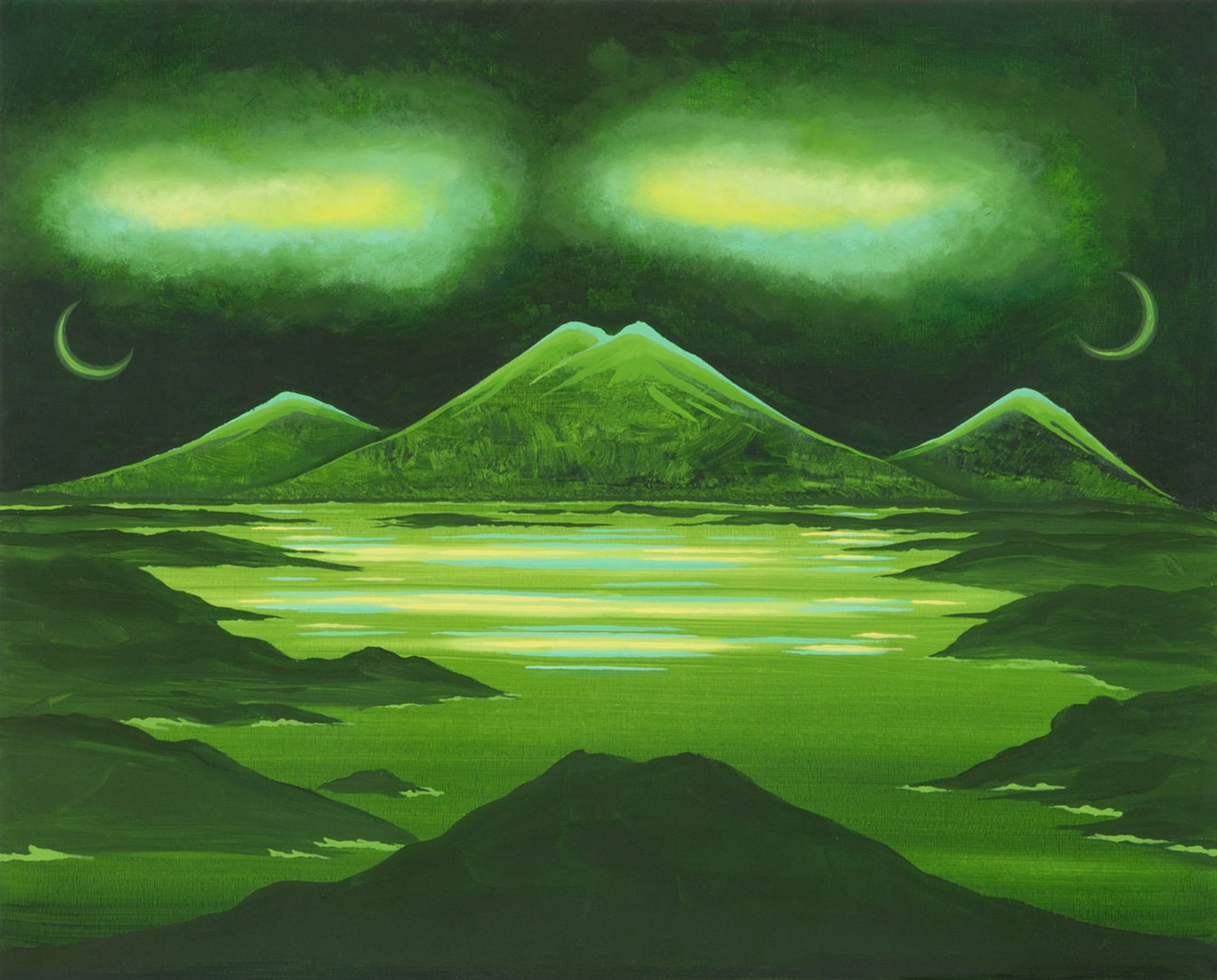
Hitchings’ monochromatic yet vibrant, surreal paintings depict mountains and celestial bodies in various stages of rising, setting, and traversing phases. The artist uses the land as a vehicle to create psychological and psychosexual spaces that visualise desires and intangible relationships experienced in life. Embodying the landscape with suggestive elements flowing, flowering, dripping, and hovering, each setting becomes both uncanny and mystical. Cycles are at the core of this exhibition. Adaptation, evolution, growth, interdependence, reproduction, reciprocation, reflection, and circadian rhythms found in nature and the human psyche drive the compositions. The works further investigate Hitchings’ interests in ancient mythologies, Eastern philosophies and early methods of tracking time based on observations of celestial and geological objects. Once sites for worship and believed to be the abodes of deities, mountains have become viewed as a tool to display the pinnacle of physical fitness or simply a chunk of natural resources to be used for human benefit and at the cost of the rest of the ecosystem. Allocating meaning and creating systems to understand the natural world and how it serves us is an effect of consciousness that Hitchings finds fascinating in today’s technology-driven world.
Many of the landscapes depict desert and water—an intentional contradiction referencing the artist’s personal history growing up in an American suburban town prone to flooding, and her current residence in a draught-ridden southern California valley. The flood is symbolic throughout history, from allegorical tales to dream interpretation, and Hitchings employs these nuances to conjure psychological implications and metaphysical narratives guided by the painting’s dominant colour and individual motifs. Drawing parallels between ambiguous natural environments and interior psychological spaces, each object, plane, and edge, is aligned, balanced, reflected or weighted by gravity to something else in the composition. Despite the limitations of monochromatic colour palettes, additive and subtractive techniques of glazing, drybrush, wiping, and layering culminate in luminous scenes implying times, temperatures, seasons, geographical locations, and moods. Teetering precariously between ominous and serene, the resulting images hold an uneasy place in the mental landscape–one which humans might not also occupy.
Press release and images via Taymour Grahne Projects, London.
